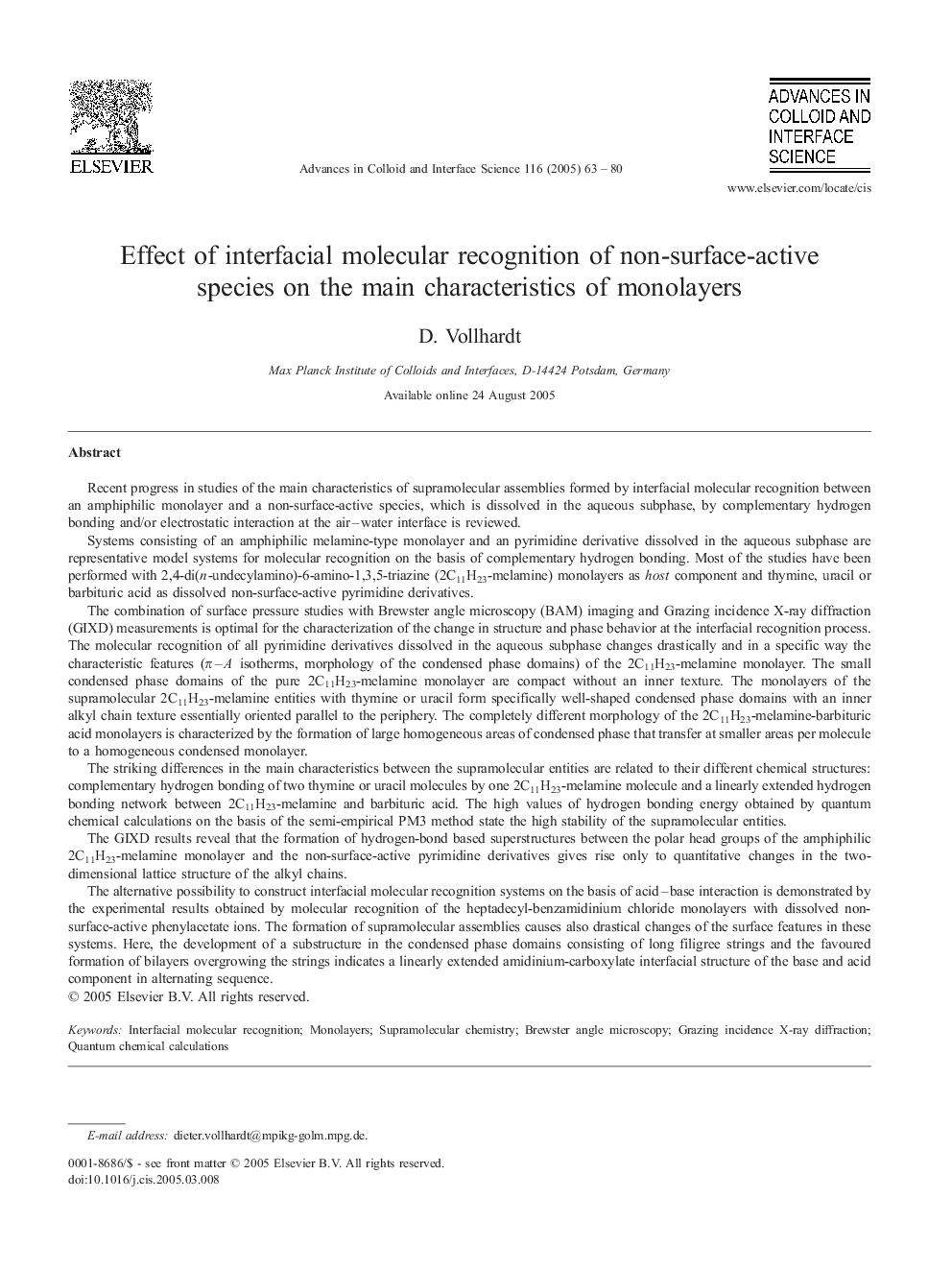| Article ID | Journal | Published Year | Pages | File Type |
|---|---|---|---|---|
| 9675246 | Advances in Colloid and Interface Science | 2005 | 18 Pages |
Abstract
The alternative possibility to construct interfacial molecular recognition systems on the basis of acid-base interaction is demonstrated by the experimental results obtained by molecular recognition of the heptadecyl-benzamidinium chloride monolayers with dissolved non-surface-active phenylacetate ions. The formation of supramolecular assemblies causes also drastical changes of the surface features in these systems. Here, the development of a substructure in the condensed phase domains consisting of long filigree strings and the favoured formation of bilayers overgrowing the strings indicates a linearly extended amidinium-carboxylate interfacial structure of the base and acid component in alternating sequence.
Keywords
Related Topics
Physical Sciences and Engineering
Chemical Engineering
Colloid and Surface Chemistry
Authors
D. Vollhardt,
